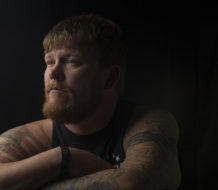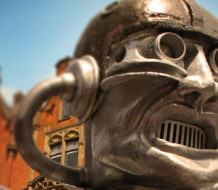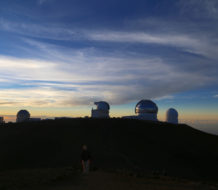When Iranian dissidents took to the streets to protest irregularities in the 2009 election, some observers dubbed it the “Twitter revolution” for the role the social networking site played in coordinating the demonstrations. The State department asked Twitter to postpone scheduled maintenance to ensure that pro-democracy activists in Iran would have uninterrupted access. Thousands of Western supporters turned their Twitter icons green in solidarity with the “green revolution.”
These protests failed to bring down the Iranian regime. And the next year, Malcolm Gladwell took to the pages of the New Yorker to pour cold water on the idea that social media had the potential to transform societies. He pointed out that for all their apparent decentralization and spontaneity, the most effective social movements tend to operate according to a carefully designed plan and to be put into action by intensely committed volunteers. The sit-ins and bus boycotts of the civil rights movement, for example, were carefully orchestrated from NAACP headquarters in New York. “The civil-rights movement was more like a military campaign than like a contagion,” Gladwell wrote.
And that, he said, makes it unlikely that social media will become a major catalyst for social change. Successful social movements need “strong ties”—people who know and trust each other thanks to years of face-to-face interactions. By itself, getting a million people to “like” your Facebook page dedicated to saving the whales isn’t going to save any whales. At some point, a critical mass of people needs to stick their flesh-and-blood necks out for the cause.
Gladwell obviously has a point. Social media isn’t going to change society all by itself. But when a movement’s most committed activists do take to the streets, it matters whether the broader population is sympathetic to their cause. And social media can be a powerful tool for increasing public awareness and support.
Indeed, when Gladwell’s New Yorker article hit newsstands in October 2010, events were already underway in Egypt that would provide a powerful counter-example to his thesis. The protests that brought down the regime of Hosni Mubarak were partly inspired by a Facebook page called “We are all Khaled Said.” It commemorated a young man who had been beaten to death by the Egyptian police in June 2010. Obviously, the flesh-and-blood protestors in Tahrir Square were essential to bringing down the Mubarak regime, but social media sites like Facebook and YouTube played an essential role in informing, motivating, and organizing people to participate in those protests.
Social media platforms are tools, and like any tools they can be used for nefarious purposes as well as heroic ones. So the effects of social media platforms on individual liberty depends on who controls them and what choices they make. Under the control of authoritarian regimes, social media platforms can be tools of repression. But if they are managed responsibly by private entities in free societies, social media platforms can be powerful tools for promoting individual liberty.
Some governments have been so spooked by the subversive potential of social media that they’ve tried to cut off access altogether. The Egyptian government cut off Internet access during the 2011 protests, though the move did not save the regime. The Chinese government reacted to riots in Xinjiang province, a traditionally Muslim area, by shutting down Internet access to the entire region for six months in 2009. Other governments have taken more targeted approaches. In 2009, Pakistan blocked access to YouTube to stop the “growing sacrilegious content” it contained.
Such tactics create a risk of backlash. Censorship is most effective when most people don’t know it’s happening. But cutting off access to entire platforms—or to the Internet as a whole—is disruptive to millions of people who are otherwise uninterested in politics. Depriving those people of access to popular, non-political content may cause them to wonder what the fuss is about, which could actually increase public interest in the very content the government is trying to suppress.
Some authoritarian governments have gone beyond blocking access to social media sites and have pursued a strategy of co-opting them to serve the government’s agenda. The Chinese government is a leader in that effort. In her new book Consent of the Networked, Rebecca MacKinnon describes how the Chinese government has actually used the social networking revolution to strengthen its hold on power.
Access to Facebook and Twitter are severely restricted in China and Internet users are encouraged to use homegrown alternatives. These sites are required to actively assist the government’s surveillance and censorship efforts. Chinese social media sites like Weibo and Renren employ a combination of automated filtering and manual human review to steer online discussion away from topics disfavored by the government. Sites that fail to police their sites to the government’s satisfaction are shut down. And users who persist in posting banned content are referred to the police for harsher punishments.
This approach gives the government fine-grained control over online discussions in China, which allows the government to create an illusion of open debate. Citizens are sometimes allowed to criticize local officials and offer suggestions for improving government services. Indeed, the ruling party may even welcome such feedback, since it allows them to improve government services and therefore bolster the legitimacy of the regime. But at the same time, the government ruthlessly suppresses topics, such as democracy or human rights, that could stoke discontent with the country’s one-party rule. And the Chinese government has also reportedly hired a 280,000-person army of commenters to ensure that the government’s point of view is well represented in online discussions.
MacKinnon points out that from the perspective of the average Chinese Internet user, there appears to be a robust marketplace of ideas online. He will see that a wide range of topics—including some political ones—are open for discussion, and it will appear to him that the pro-government side of the debate enjoys broad popular support. He is unlikely to realize just how much the discussion has been manipulated to promote the government’s political agenda.
Will China’s Internet strategy succeed in turning social media sites into an asset for the Chinese Communist Party rather than a liability? It’s too early to tell for sure. Even with its new, more powerful censorship tools, the government has less control over the national conversation than it used to. In the past, the government might have tried to completely bury news stories—such as a botched response to a natural disaster or sensational scandals in local politics—that the central government viewed as politically inconvenient. But even China’s highly censorious social media sites, as well as its censored email and text messaging networks, propagate gossip too quickly for the government to completely suppress news of such events. The best they can do is to make sure that the government’s version of the story is featured prominently on the Chinese Internet while critical perspectives are pushed to the margins.
Moreover, it isn’t clear how many countries can effectively replicate China’s approach. Smaller nations tend to be more outward-looking, so the strategy of building a Potemkin Internet to lure citizens away from the subversive ideas on the global Internet may not work in countries with populations one or even two orders of magnitude smaller than China’s. And few authoritarian regimes enjoy the Chinese government’s stability, resources, or technical competence.
For now, at least, many authoritarian regimes still allow access to American social media sites. And even in China, hundreds of thousands of citizens have figured out how to circumvent the Great Firewall and reach the unfiltered Internet. This means that the decisions of American technology companies can have a big influence on the spread of freedom around the world.
For example, Facebook faced a backlash in 2009 when it abruptly decided to make users’ friends lists public information. Previously, Facebook had put this decision under the control of users. Dissidents in despotic regimes had chosen to keep the lists private out of fear that their governments would persecute people they had listed as friends on social media sites. Facebook eventually acknowledged its mistake and partially reversed the changes, but not before millions of Facebook users’ safety was put at risk.
As Facebook, Twitter, Orkut, Google+, and other social media sites reach a growing international audience, the Silicon Valley firms that operate these sites need to remember that not all of their users live in countries with robust protections for free speech. Suddenly exposing information that had previously been hidden can have dire consequences.
Even in the United States, more could be done to help social media sites reach their potential as a force for individual liberty. Under a legal theory called the third-party doctrine, information stored on third-party servers does not enjoy the same robust Fourth Amendment protections as our phone calls, letters, and papers in our home. American law enforcement officials can obtain access to private information on these sites without a warrant, and in some cases without any judicial oversight at all. Despite the protections offered by the US Bill of Rights, there are some activists in the United States who fear scrutiny from law enforcement. We ought to set a good example by revising the law to require the police to get a warrant before they obtain access to private information on social networking sites.
So social media can be used for both good and evil, depending on who controls them and what choices they make. Social media platforms built by firms in free societies are largely forces for good, allowing their users to organize to promote freedom and individual rights. On the other hand, social media platforms that are under the thumbs of repressive regimes may do serious damage to individual freedom by giving those regimes the power to spy on and manipulate their people.
Questions for discussion:
- How has social media promoted or hindered individual liberty in the United States?
- Will the Chinese government be able to keep their people in the dark about the extent to which their social media sites are censored and manipulated? Could government control become so heavy-handed that it sparks a backlash by Chinese Internet users?
- Do you post freely on social media or do you stop to think about how your post might look to others (like employers)? Is this a form of self-censorship?
- The Chinese social networking site Renren is listed on the New York Stock Exchange. Is it ethical to invest in a company that is an active partner in state censorship?
Discussion Summary
My initial essay focused on the relationship of social media to a political conception of liberty—that is, freedom from undue government coercion. Freedom of speech is a particularly important aspect of individual liberty in this context, since the Internet has the potential to greatly enhance individuals’ ability to share their ideas with the world.
Yet commenter OneManGang helpfully drew my attention to the fact that there are other ways to think about liberty. For example, John Stuart Mill wrote about liberty as freedom not only from coercion by government but also from the constraints of social conventions. Related to this is employees’ freedom to live their personal lives as they see fit without facing potential repercussions in the workplace.
Social media can have a real impact on this kind of liberty. In the pre-Internet world, many people lived compartmentalized lives. They might have behaved one way in the workplace, another way with family, and still another way with their friends. Young people might have felt free to live riotously on Friday night without worrying that their employers or parents would learn of their antics on Monday morning. These varied social settings created a degree of freedom from the kind of stifling social conventions Mill wrote about.
But Facebook has a strict rule against adopting multiple identities, which erodes this kind of compartmentalization. For example, shortly before Barack Obama became president, 27-year-old Obama speechwriter Jon Favreau was photographed making an obscene gesture with a cardboard cutout of Hillary Clinton, who Obama had recently named as his Secretary of State. A decade earlier, such a photograph likely would not have circulated beyond a small group of friends. But the photo was posted on Facebook and wound up being covered by the Washington Post, forcing Favreau to issue an apology to the former first lady.
This kind of incident has become fairly common as young people have begun regularly posting information about their personal lives on social networking sites. This has become a source of significant angst, especially among older observers who view such behavior as reckless over-sharing.
Yet the dangers can easily be overstated. In the pre-Facebook era, it would indeed have been awkward and potentially career-damaging to have photographs of your drunken antics circulating among potential employers. But the ubiquity of social networks is itself helping to mitigate this danger. Today lots of young people have mildly embarrassing photographs on their Facebook pages; an employer who refused to hire anyone with such pictures would be significantly reducing his potential labor force. The very ubiquity of online sharing is creating a society that is more tolerant of certain kinds of behavior.
Facebook has also taken steps to mitigate these problems. For example, you can now define sub-groups of friends and limit access to posts, pictures, and other content only to people in a particular sub-group. This process is cumbersome enough that a lot of people don’t bother to use it, but it’s available for those who are particularly worried about one group of Facebook friends seeing information meant for another group.
And not all social networking sites follow Facebook’s rigid “real name” policy. Twitter, for example, allows users to have as many accounts as they wish and allows those accounts to be pseudonymous. Someone who wants to be candid online but fears the offline repercussions is free to join Twitter anonymously.
And it’s important to remember that social media technologies, and the Internet more broadly, also has the potential to enhance the kind of liberty Mill wrote about. Consider the “it gets better” project, an effort to prevent suicides by gay teenagers by posting YouTube videos explaining how much better their lives will become after they finish high school. Social networking sites can help people who feel marginalized in their “real world” communities to build alternative communities of like-minded people who can lend each other emotional support.
So there’s a real potential for broad participation in social media sites to produce increased pressures for social conformity. But on net, I think social networks primarily have the opposite effect. They allow like-minded people to meet each other and build rich online relationships. At the same time, by bringing people with diverse backgrounds and perspectives in contact with each other, social networks have the potential to make all of us a little more tolerant and open-minded. In the long run, that’s going to make us freer in both a political sense and a social one.
Two New Big Questions:
Is it appropriate for employers to monitor and control their employees activities on social networks? Should parents oversee their teenage children’s online interactions? What steps should be taken to enhance or diminish the control of authority figures over peoples’ online activities?
It is sometimes claimed that thanks to the emergence of social media, young people today are no longer interested in privacy. Is this true? How have social networking sites changed our concept of privacy and our norms relating to it?











Hello,
What are your thoughts on the protests in Egypt and the violence in Libya, given the role social media (the YouTube video) may have played in at least one of these events?
Thank you,
Ansley Roan
Obviously, the attacks, and the death of American personell, are tragic. As I understand it, there’s still some uncertainty about the relationship between the anti-Muslim video that some claim sparked the protests and the subsequent violence.
But assuming that the attacks were a response to the video, I think it’s another illustration of the fact that the increasing interconnectedness made possible by the Internet is a two-edged sword. Overall, I think YouTube is a force for international peace and harmony, since it helps people around the world share videos and thereby better understand one another. But obviously, it can also have the opposite effect, of bringing together antagonistic forces and exacerbating existing tensions.
But I think it would be a mistake to use that as a pretext for censoring platforms like YouTube. The overwhelming majority of online sharing does not lead to any sort of violence. And when violence does occur, it’s ultimately the fault of those who commit it, not the platforms that may have conveyed messages the perpetrator found offensive.
The question of the relationship between social media platforms and liberty cannot be answered in 140 characters.
Tim Lee’s essay is thoughtful and carefully argued. Unfortunately such an approach yields no radical, Gladwellian insight but instead a cautious insistence on waiting for the data to come in.
Lee focuses on the political sense of liberty in the sense of the familiar narrative of “the individual versus the state.” But there is also an adjacent argument about how “free” we are when we are “tethered” to our smart phones and facebook. If you think this second question about freedom is merely a distraction from real discussions of freedom, consider the cases of Phoebe Prince (sp?) and Tyler Clementi and others who are the victims of online bullying (which in those two cases led to suicide).
Although I have not studied this issue with anything like the care or background of expertise that the author has, my impression is that anything that truly decentralizes information–gets it out of the control of the regime–is helpful to the first sort of “political liberty.”
But many social media platforms strike me as attracting many, many people to put all of their thoughts, ideas, and, importantly, plans for political insurrection in one place. This, it seems to me, means that a savvy government could shut it down more easily, at least at first. Having all the eggs in one basket can’t be a good idea.
I’m not even sanguine about this in the U.S. Recent revelations seem to indicate that the NSA has “wiretapped” a great deal of information on all Americans and readily shares them with the extended network of law enforcement bureaucracies across different jurisdictions/governing different activities. I, for one, am frequently afraid to post my more radical political opinions online. true story.
Obviously, this is a much worse problem in, say, Byelorussia.
I don’t agree with the idea of people being less free because they are “tethered to their iPhones” or subject to online bullying. A couple of points.
On the idea of being too tied to our devices, I think a lot of people who express this sentiment are suffering from a knee-jerk reaction to new technologies. A half-century ago, many people worried that people were addicted to their televisions. While some people still express concerns about the dangers of excessive television consumption, we tend to take it for granted as an ordinary part of life. The same can be said of our telephones. Twenty years ago, nobody thought a teenage girl was a slave to her telephone if she spent a lot of time talking to her friends. As our computers, tablets, and smart phones become more familiar, I think the idea that we’re slaves to them will be seen as increasingly silly. We spend a lot of time using them because they make our lives richer than they would otherwise be.
People also tend to forget that the primary thing we do on our gadgets is communicate with other people. In that sense, our time spent online isn’t an alternative to face-to-face interaction as it is a complement to it. Tools like Facebook and Twitter let us meet new people, keep in touch with old friends, and arrange face-to-face social activities.
I think online bullying is a real problem, especially for women. The owners of online fora can do a lot to set the tone of an online space by establishing clear rules and then moderating comments to ensure those rules are respected. Also, there’s an important role for anonymity in ensuring that people feel comfortable contributing to discussions without exposing their real-world identity to scrutiny. Thanks for commenting!
Galdwell was wrong about much of the civil rights movement. The sit-in at the Greensboro, NC, Woolworth’s (which was the first major sit-in in 1960) was thought-up by the four students who initiated it. After the first day, they recruited more volunteers and eventually formed an organization to coordinate the protests in Greensboro. Meanwhile, as students in other cities learned of the protests — both through traditional media and through their social networks — they began to organize their own independent sit-ins. Gladwell notes that many of these people had training or affiliation from the NAACP, but that hardly makes the spread of the sit-ins a campaign. Meanwhile, the Montgomery bus boycott involved local NAACP members (Rosa Parks, E.D. Nixon), but they created a new organization (the Montgomery Improvement Association) to lead it, rather than rely on leadership from the NAACP’s national staff.
I’m not trying minimze the importance of national groups in laying the groundwork for early civil rights protests, but to characterize the movement as a top-down campaign is laughable. One theme running through the Taylor Branch’s bio of Martin Luther King, Jr., is how often local activists were frustrated with the perceived timidity of groups like NAACP and CORE, leading them to create new, more responsive alternatives (SCLC, SNCC), only to have those new groups struggle to keep up with a movement that has expanded beyond their ability to manage.
Gladwell makes two critical mistakes in his analysis: he assumes that social networking is something new, and he assumes that an idividual needs to have strong ties to a movement before getting involved with it. But a collection of churches or student groups is itself a social network, and the movement spread across the country as activists in one region saw what worked in other areas.
The people who sent money to support the bus boycotters had no strong ties to Montgomery, but they had strong ties to their local churches, which had weaker ties to churches in Montomery. The students at the sit-ins had strong ties to each other, but weak ties to the students at the sit-ins in other cities. The Freedom Summer volunteers had strong ties to each other and to SNCC, but few ties to the South at all. What got them all together was the social networks that existed between these groups. What kept them together was that they developed strong ties to other people within the movement and to the movement as a whole.
Clay Shirkey defined three levels of awareness that lead to a mass movement:
1. when everybody knows something
2. when everybody knows that everybody knows
3. when everybody knows that everybody knows that everybody knows
In the first level, protesters needs the courage to act alone, because they can’t be sure anyone agrees with them. In the second, those with less courage will join them, because they have strong ties to a group that agrees and can act together. In the third, those with weak ties to the original protesters will learn of the actions, and, because the protest is now so large, will have less fear of joining.
It took a lot of courage to refuse to give up a seat in 1955, knowing you were alone; or to sit at a lunch counter in 1960, knowing you only had three companions for support. But thanks to the changes in society that those actions helped to create, a supporter of civil rights heading to the March on Washington in 1963 could count on having closer to 300,000 companions. The same thing happened in Egypt, but thanks to sites like facebook, twitter and youtube, it all happened much quicker.
Social media sites are tools. We can use them to develop strong ties or weak ties. We can use them to watch events unfold, to participate in events, or to try to shape events. In this way they are different from the social networking sites of the past — village squares, cafes, pamplets, letters, phones, etc. — only in their reach, and as such they definitely promote individual liberty.
jlansner, those are great points. You clearly know more about the Civil Rights movement than I do so I don’t have a lot to add. I’m a big fan of Clay Shirkey’s work, and his “levels of awareness” seem very relevant here.